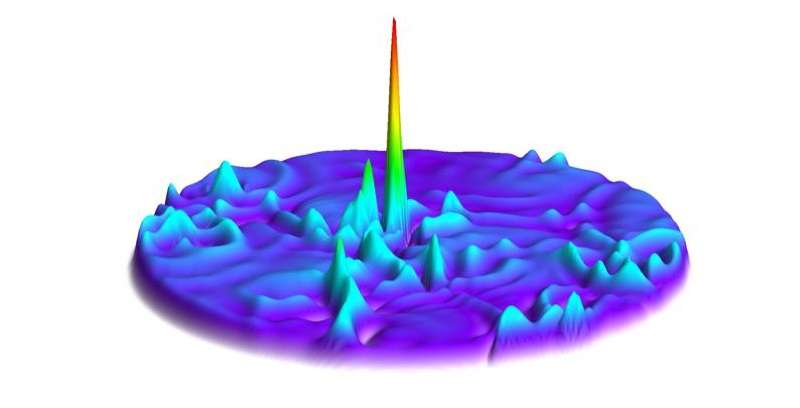February 10, 2016 feature
Optical rogue waves reveal insight into real ones

(Phys.org)—Rogue waves in the middle of the ocean often appear out of nowhere and vanish just as quickly. But in their short lifetimes, they can generate walls of water 15 to 30 meters (50 to 100 feet) high, crashing down with enough force to sink even the largest ships. Although rare, when rogue waves do occur they often take ships by surprise because their formation is not well-understood, and so they are difficult to detect in advance.
Since tracking down a rogue wave in order to study it would be difficult and dangerous, researchers have come up with another way to study these waves: creating a small-scale optical version in the lab that forms by similar underlying mechanisms, except in light instead of water. In the past few years, scientists have realized optical rogue waves in optical fibers, photonic crystals, and other optical systems.
Now a team of researchers, Christopher J. Gibson, Alison M. Yao, and Gian-Luca Oppo at the University of Strathclyde in Glasgow, Scotland, has proposed a new way to produce optical rogue waves in a two-dimensional space. Their work is published in a recent issue of Physical Review Letters.
"By understanding the mechanism for generating rogue waves, we can devise methods to detect their precursors—in our case, multi-vortex collisions," Oppo told Phys.org. "By knowing where there is a high probability of rogue waves occurring, ships can change course to avoid catastrophic events."
In the new proposed mechanism, optical rogue waves could form by a sequence of events that starts with a small instability in the regular wave pattern. This pattern instability first leads to a phase instability (the waves' shapes begin to change), which then leads to an amplitude instability (the waves' heights begin to change), which eventually creates swirling vortices. If there are enough vortices, then multi-vortex collisions can occur and produce a large, short-lived spike—the optical equivalent of a rogue wave.
"We can realize vortex-mediated turbulence to channel large powers into a single, huge, narrow peak of light," Gibson said.
As the researchers demonstrated, these peaks of light can be up to 27 times higher than the average fluctuation. In oceanography, waves with peaks 8 times larger than the average wave are already considered very dangerous.
The researchers also showed that the new formation mechanism should be observable in a wide variety of systems, including different types of lasers, semiconductors, liquid crystals, chemical reactions, and fluid dynamics.
In the future, studying this formation mechanism in the lab could lead to a better understanding of oceanic rogue waves, and eventually help warn ships to stay away from these rare but deadly encounters.
"We plan to extend the research and control of extraordinarily large fluctuations to several quantum optical systems and to better quantify precursors of these rare events in the presence of vortices," Yao said.
More information: Christopher J. Gibson, et al. "Optical Rogue Waves in Vortex Turbulence." Physical Review Letters. DOI: 10.1103/PhysRevLett.116.043903 , Also at arXiv:1509.02418 [physics.optics]
Journal information: Physical Review Letters
© 2016 Phys.org





















